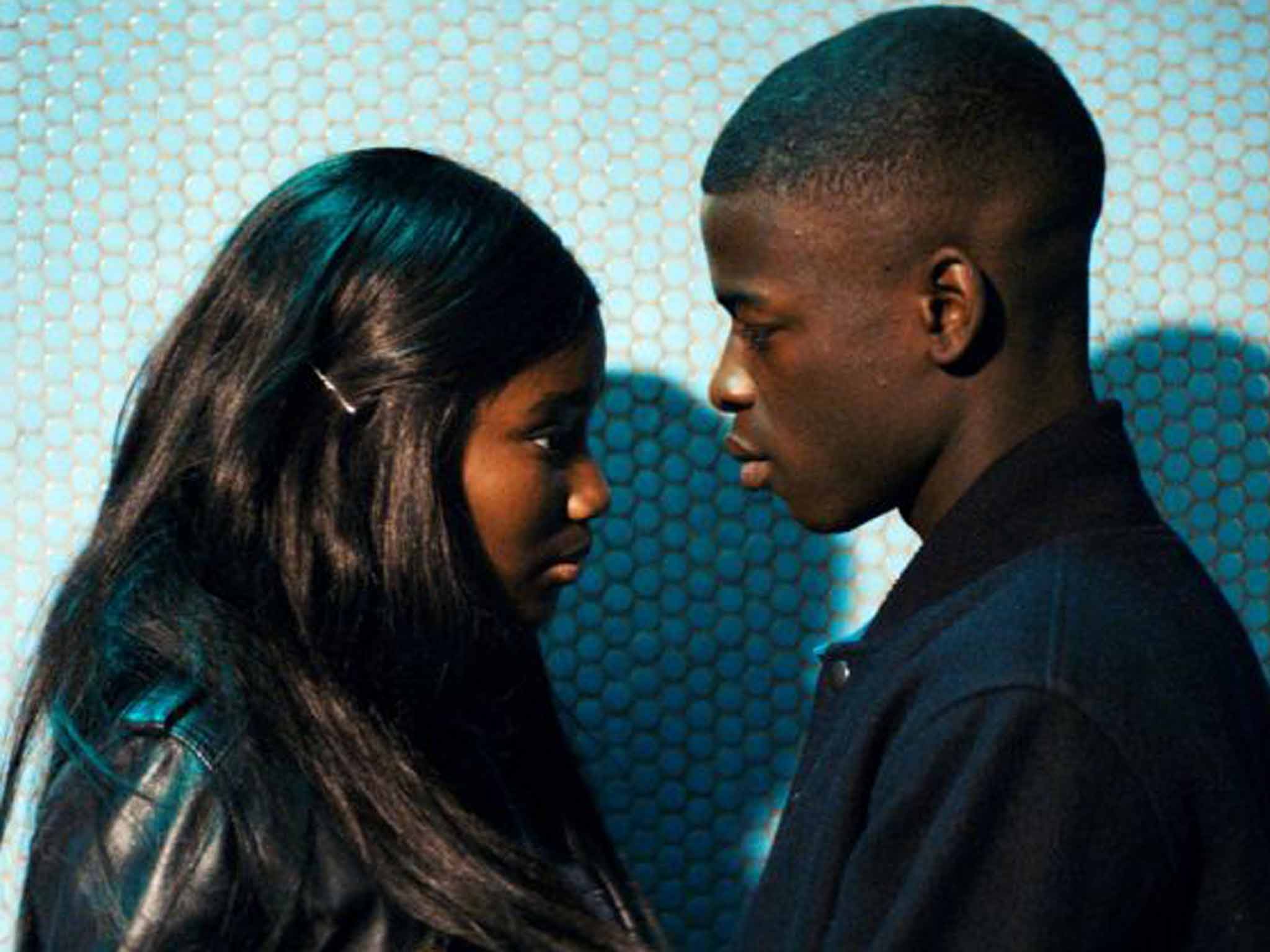Girlhood and Honeytrap: New girl gangs films reflect modern life in Britain and France
Girl gangs are the subject of two new films this week. Cinema has always been fascinated by rebel women, says Kaleem Aftab

When a teenage girl attacked a disabled woman in eastern France last September, debate raged over whether girls were as aggressive as boys. Police in the country have now launched a campaign targeting girl gangs such as Ghetto Youth, Bana Danger and Tokyo Girls. In the UK, the Centre for Social Justice was so concerned last year by the rise in the number of women in British street gangs that it conducted a study; it concluded that the involvement of girls in British gangs is usually defined by their sexual relationships with boys.
Two films out this week reflect the state of affairs in Britain and France; they also reflect cinema's fascination with girls in gangs. Rebecca Johnson's Honeytrap is set in south London and was inspired by true events. Her starting point was the 2008 case involving Samantha Joseph, 15, who led Shakilus Townsend into an ambush where he was murdered by a gang headed by Danny McLean, with whom she was in love. Johnson has worked for more than a decade with young people in south London. "I felt I had immersed myself enough to create characters and a story that would be authentic," she says.
Céline Sciamma's Girlhood tells the story of the 16-year-old Marieme (Karidja Touré), a failing student who gets involved with a gang of girls on her estate. "Black girls don't exist in French cinema," argues the 36-year-old director, whose film critiques popular definitions of beauty and self-worth while highlighting the huge divide between the haves and the have-nots in French society.
In Meyer's film, and in biker movies like She-Devils on Wheels and The Hellcats (both 1968) there were no parents, no condemnation; these women were free spirits, happy to fight the oppressive, male-dominated system. The theme continued in Switchblade Sisters (1975), about girls who reject the men in the group and form their own gang. It had a renaissance after Quentin Tarantino paid homage to it in Kill Bill (2003).
In the Eighties, girl gangs morphed into vacuous cliques seeking approval. Arguably it was the Pink Ladies of Grease (1978) who kicked off the trend. Being popular and having the money to buy the latest thing was what separated the heroines of Heathers (1988), Clueless (1995) and Mean Girls (2004) from the crowd.
Less nuanced studies of girls in gangs can be found in two recent American films, Harmony Korine's Spring Breakers (2012) and Sofia Coppola's The Bling Ring (2013). Like nearly all the girl gangs on American film, the members are predominantly white (The Lizzies in Walter Hill's 1979 classic The Warriors and the four friends in the 1996 film Set It Off being notable exceptions) and mostly rich. It is not popularity that they seek but designer clothing and a celebrity lifestyle. Spring Breakers depicts three girls robbing a restaurant so that they can head to Florida for a holiday. The Bling Ring, based on a true story, shows a gang, mainly girls, robbing the houses of celebrities.
The latest girl-gang films combine the materialism of the Eighties with the outsider attitude of the Fifties and Sixties. Take Girlhood's most memorable sequence: after the girls go on a robbing spree through the department stores of Paris they retire to a hotel room to try on their wares (keeping the tags on, of course) and dance and sing along to Rihanna's 2012 pop anthem "Diamonds (In the Sky)".
Sciamma uses the music to link the gang's attitude to hip-hop culture's obsession with thug life. More than that, though,the song is an anthem for sisterhood; in the absence of any men, or any sexual undertones, the lip-synching and happiness play out as a celebration of femininity. It's a film that doesn't judge the girls for the choices they make, but rather questions the society that has created them.
Honeypot also links the problem to a social crisis. Ignoring the commentary on materialism and looting that drove the debate during the London riots in the summer of 2011, Johnson cites a broken society and love as the reasons why her lead character Layla gets involved in acting as bait for a gang murder.
Both films indicate that cinema is finally starting to take girl gangs seriously.
'Girlhood' and 'Honeytrap' are out on Friday
Subscribe to Independent Premium to bookmark this article
Want to bookmark your favourite articles and stories to read or reference later? Start your Independent Premium subscription today.

Join our commenting forum
Join thought-provoking conversations, follow other Independent readers and see their replies